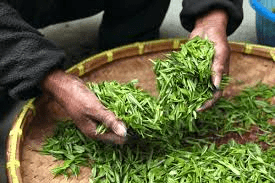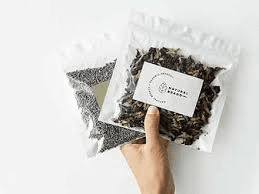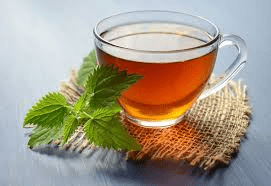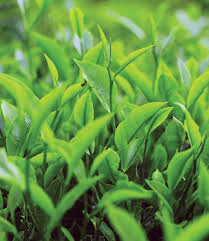Processing, packaging, and exporting tea involves several key steps to ensure that the tea reaches consumers in its best form. The journey begins with tea leaves being harvested from tea plants. These leaves are then processed to develop their flavor and aroma.
There are several methods for processing tea, including withering, rolling, oxidation, and drying. Withering involves spreading the freshly picked leaves out to lose moisture, making them softer and more pliable. Next, the leaves are rolled or crushed to release their juices and start the oxidation process.
Oxidation, also known as fermentation, changes the color and flavor of the leaves. After the desired level of oxidation is reached, the leaves are dried to stop the process and lock in the flavors. The drying can be done using hot air, ovens, or even by pan-frying.
Once the tea leaves are processed, they are sorted and graded. Sorting involves separating the leaves based on size and quality. Grading helps to ensure that only the best leaves are packaged and sold. The processed tea is then packaged to preserve its freshness and quality.
Packaging is important because tea is sensitive to light, moisture, and air, which can affect its flavor. Tea is usually packaged in airtight bags or containers to keep it fresh. The packaging also includes information such as the type of tea, its origin, and brewing instructions. This information helps consumers understand what they are buying and how to prepare it properly.
The final step is exporting the tea to international markets. Exporting involves several logistical and regulatory considerations. Tea must be carefully packed for transport to avoid damage. Exporters need to comply with various regulations and standards, including those related to quality, safety, and labeling.
They also need to work with shipping companies to arrange transportation and ensure that the tea is properly documented for customs clearance. This includes providing necessary certificates and adhering to import regulations of the destination country.
Processing, packaging, and exporting tea are crucial steps in delivering high-quality tea to consumers. Each step requires careful attention to detail to ensure that the tea maintains its flavor and quality from the farm to the cup. By following best practices in each stage, tea producers can provide a product that meets global standards and satisfies tea lovers around the world.
How to Process Tea for Exportation

1. Harvesting: Tea leaves should be harvested when they are young and tender, usually in the early morning. Pluck only the top two leaves and the bud from each tea plant to ensure the highest quality.
2. Withering: After harvesting, spread the tea leaves out on racks or trays to wither. This process reduces the moisture content and makes the leaves more pliable for the next steps. Withering usually takes 12-18 hours.
3. Rolling: Roll the withered tea leaves to break up the cell structure and release essential oils. This process helps develop the flavor and aroma of the tea. Rolling can be done manually or using machines.
4. Oxidation: Allow the rolled tea leaves to oxidize in a controlled environment. This step is crucial for developing the tea’s flavor and color. Oxidation time varies depending on the type of tea, ranging from a few hours to overnight.
5. Firing: Heat the oxidized tea leaves to stop the oxidation process. This can be done by pan-firing, steaming, or using a hot air dryer. Firing helps lock in the flavor and preserves the tea.
6. Sorting: Sort the fired tea leaves to remove stems, dust, and broken leaves. Sorting ensures that only high-quality tea leaves are used for export. This can be done using mechanical sorters or manually.
7. Grading: Grade the tea leaves based on their size, color, and quality. Different grades are used for different markets, with higher grades generally fetching higher prices. Proper grading is essential for meeting export standards.
8. Blending (optional): Blend different grades or types of tea to achieve a desired flavor profile. Blending helps create a consistent product and can enhance the overall quality of the tea.
9. Packaging: Package the processed tea in airtight containers to protect it from moisture, light, and air. This helps maintain the quality and freshness of the tea during transit and storage.
10. Documentation: Prepare all necessary export documentation, including certificates of origin, phytosanitary certificates, and quality assurance certificates. This ensures compliance with international trade regulations and smooth customs clearance.
Read Also: 15 Medicinal Health Benefits Of Comfrey (Symphytum officinale)
How to Package Tea for Exportation

1. Choose Packaging Materials: Select high-quality packaging materials such as vacuum-sealed bags, foil-lined pouches, or sturdy boxes. These materials help protect the tea from moisture, light, and air.
2. Measure Portions: Decide on portion sizes based on market requirements and customer preferences. Common sizes include 50g, 100g, or 250g for retail, or larger quantities for bulk buyers.
3. Seal Packages: Use appropriate sealing methods to ensure that packages are airtight. For vacuum-sealed bags, use a vacuum sealer to remove air and maintain freshness.
4. Label Packages: Clearly label each package with essential information such as product name, weight, origin, and date of processing. Include any additional details required by the importing country, such as certifications or nutritional information.
5. Include Documentation: Attach copies of required export documents to the packages or place them inside the shipment. This includes certificates of origin, quality assurance certificates, and packing lists.
6. Inspect Packaging: Check that all packages are properly sealed, labeled, and free from defects. This helps prevent issues during customs inspection and ensures that the tea reaches its destination in good condition.
7. Palletizing: For large shipments, arrange the packages on pallets. Ensure they are stacked evenly and secured with straps to prevent shifting during transport. This helps in handling and shipping efficiency.
8. Use Cushioning: If shipping in bulk or fragile containers, use cushioning materials such as bubble wrap or packing peanuts to protect the tea from impact and damage.
9. Maintain Cleanliness: Ensure that the packaging area is clean and free from contaminants. This helps preserve the quality of the tea and avoids cross-contamination.
10. Store Packages: Store the packaged tea in a cool, dry place until it is ready for shipment. Avoid exposing it to direct sunlight or extreme temperatures to maintain quality.
How to Export Tea for Profits
1. Market Research: Conduct thorough market research to identify potential markets and understand demand for tea. Look for regions with high tea consumption or emerging markets with growing demand.
2. Understand Regulations: Familiarize yourself with export regulations and requirements for the target market. This includes tariffs, import restrictions, and quality standards specific to tea.
3. Find Buyers: Reach out to potential buyers or importers in your target market. Attend trade shows, join tea associations, and use online platforms to connect with buyers.
4. Set Pricing: Determine competitive pricing based on market conditions, production costs, and profit margins. Consider factors like quality, grade, and packaging when setting prices.
5. Negotiate Terms: Negotiate terms with buyers including payment terms, delivery schedules, and contract conditions. Ensure both parties agree on these terms before finalizing the export deal.
6. Secure Logistics: Arrange for reliable logistics and transportation to ensure timely and safe delivery of your tea. Choose experienced logistics providers who specialize in handling agricultural products.
7. Monitor Quality: Continuously monitor the quality of your tea to meet export standards. Implement quality control measures throughout the processing and packaging stages to address any issues promptly.
8. Handle Documentation: Complete all required export documentation accurately and in compliance with international trade regulations. This includes preparing invoices, packing lists, and certificates of origin.
9. Promote Your Product: Invest in marketing and promotion to increase visibility and attract more buyers. Use online marketing, social media, and trade publications to reach a broader audience.
10. Evaluate and Adjust: Regularly review your export performance and customer feedback. Make adjustments to your strategy as needed to improve profitability and expand your market reach.
Read Also: Worm Infestation on Ruminant Animals: Symptoms and Treatment
Frequently Asked Questions (FAQ’s) About Tea

1. What are the different types of tea? The main types of tea are black, green, white, oolong, and herbal. Each type differs in processing methods and flavor profiles.
2. How should tea be stored? Tea should be stored in an airtight container in a cool, dark place to preserve its freshness and flavor. Avoid exposure to moisture and strong odors.
3. What is the difference between loose leaf tea and tea bags? Loose leaf tea is generally higher quality and allows for better flavor extraction, while tea bags are convenient but may contain lower-quality tea dust.
4. How do I brew tea properly? Brew tea according to the type and recommended temperature. For black tea, use boiling water; for green tea, use slightly cooler water. Steep for the recommended time to avoid bitterness.
5. What is tea oxidation? Tea oxidation is a chemical process that affects the flavor, color, and aroma of tea. It occurs during processing and varies by tea type.
6. Can tea be flavored? Yes, tea can be flavored with ingredients like fruits, herbs, and spices. Flavored teas are created by blending or adding flavorings during processing.
7. What are the health benefits of tea? Tea can offer various health benefits, including antioxidants, improved heart health, and enhanced mental alertness. Different teas provide different benefits based on their composition.
8. What is tea blending? Tea blending involves combining different types or grades of tea to achieve a specific flavor profile or consistency. Blending can create unique and balanced teas.
9. How can I tell if tea is fresh? Fresh tea should have a strong, pleasant aroma and vibrant color. Stale tea may have a faded aroma and dull appearance.
10. Is it possible to make tea at home? Yes, you can make tea at home by steeping tea leaves or tea bags in hot water. Adjust the quantity and steeping time to suit your taste preferences.
Read Also: How to Grow Tomatoes in Containers

